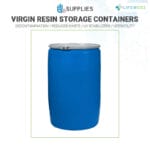What are Safety Labels?
Safety labels are visual indicators affixed to equipment, machinery, chemicals, or other workplace materials to provide warnings, instructions, or essential safety information. These labels serve to alert workers and others to potential hazards, proper usage guidelines, and regulatory compliance information. Safety labels typically include symbols, color codes, text, and pictograms that convey the level of danger and specific precautions to take. They are used in a variety of industries, including manufacturing, construction, healthcare, and chemical processing, to ensure that employees are aware of safety risks and understand how to operate equipment or handle substances safely.
Safety labels are designed to meet specific standards, such as those set by OSHA (Occupational Safety and Health Administration), ANSI (American National Standards Institute), and GHS (Globally Harmonized System) for hazard communication.
Importance of Safety Labels in the Enterprise Environment
In any enterprise environment, safety labels play a critical role in preventing accidents, injuries, and exposure to hazardous substances. Proper labeling ensures that workers understand the risks associated with machinery, equipment, or materials they are handling and know how to operate or handle them safely. Clear and accurate safety labels help create a safer work environment, reducing the risk of accidents and protecting employees from harm.
Safety labels are particularly important for regulatory compliance. Organizations like OSHA require businesses to properly label dangerous equipment, hazardous chemicals, and other potentially risky items to ensure that workers are adequately informed about the associated dangers. Failure to comply with labeling requirements can result in fines, legal liabilities, and increased workplace accidents.
In addition to promoting safety and regulatory compliance, safety labels improve operational efficiency by providing workers with quick and clear instructions for operating machinery, handling materials, or following safety protocols. This reduces downtime caused by accidents or misunderstandings and contributes to smoother, more efficient workplace operations.
Types of Safety Labels
1. Warning Labels
- Purpose: Alerts workers to potential dangers such as hazardous equipment, flammable substances, or high voltage.
- Common Uses: Affixed to machinery, electrical panels, or chemical containers to warn of specific risks.
2. Hazardous Chemical Labels (GHS Labels)
- Purpose: Identifies hazardous chemicals and provides information on safe handling, storage, and disposal.
- Common Uses: Used in industries handling chemicals, such as laboratories and manufacturing plants, to comply with GHS standards.
3. Instructional Labels
- Purpose: Provides instructions on the proper use or maintenance of equipment.
- Common Uses: Found on machinery, tools, and devices to guide workers on safe operation.
4. Fire and Emergency Labels
- Purpose: Directs workers to fire exits, fire extinguishers, or emergency equipment.
- Common Uses: Used in all types of workplaces to ensure quick access to emergency tools and exits.
Managing Safety Labels with Enterprise Software
Enterprise software solutions can streamline the management of safety labels by automating compliance tracking, updating labels for regulatory changes, and ensuring that all equipment and hazardous materials are properly labeled. Key features include:
- Compliance Monitoring: Track labeling compliance with OSHA, GHS, ANSI, and other relevant regulatory standards to avoid penalties and ensure worker safety.
- Inventory Management: Keep track of labeled equipment, hazardous materials, and ensure labels are maintained, updated, and replaced when necessary.
- Label Customization and Printing: Automate label creation, customization, and printing, ensuring consistency and accuracy across all work environments.
- Inspection Tracking: Monitor the condition and visibility of safety labels during routine inspections to ensure they remain legible and effective.
Conclusion
Safety labels are essential for protecting workers, ensuring regulatory compliance, and maintaining safe and efficient operations in any enterprise environment. They provide clear, immediate guidance on hazards, safe operation, and emergency procedures. By leveraging enterprise software, businesses can manage safety labels more effectively, ensuring compliance with regulations, optimizing workplace safety, and maintaining a culture of safety across all operations.
« Back to Glossary Index
















